Basic Coffee making methods in Coffee Encyclopedia
(I) basic coffee
The classification of basic coffee may be the most dissenting, but this is also the most important point. Whether this classification is appropriate or not has a direct impact on our understanding and research on coffee drinks. Our classification method is based on the history of coffee beverages and the principle of coffee beverage production.
In addition to the oldest and most traditional way of drinking coffee among Ethiopians who first started drinking coffee, the first is Arabian coffee, which is the most popular in the Arab region (some people call it Turkish coffee). After coffee entered Europe, it evolved into the most popular coffee for a long time. After that, the Italians invented espresso, espresso, and evolved a series of coffee drinks based on espresso, which were promoted by Starbucks and became popular all over the world. So we divide the basic coffee into the following three categories
Arabica coffee (including Turkish coffee)
Extraction conditions, high temperature, atmospheric pressure, non-filtration
Drip filter coffee
Extraction conditions, high temperature, atmospheric pressure, filtration
Italian Coffee
Extraction conditions, high temperature, high pressure, filtration
The difference between the first two basic coffees above is whether they are filtered or not, both of which are made at high temperature and atmospheric pressure. So in fact, the taste of the coffee produced is not very different, very close. Because their production principle is the same, the only difference is filtering and non-filtering. But because Arabica coffee is spiced, and it is made by ultra-fine grinding of coffee powder. So the taste will not be the same, which may be the reason why many people prefer to think of them as two different coffee drinks.
It is precisely because Arabica coffee and drip filter coffee are extraction processes at high temperature and atmospheric pressure, so when we analyze and study the extraction process of coffee, we do not analyze Arabica coffee alone, but only analyze drip filter coffee. The same principle applies to Arabica coffee.
Here, we want to correct a concept that has spread widely and has not been understood and clearly distinguished for many years, that is, the so-called "Turkish coffee" actually refers to "Arabica coffee".
Arabica coffee and Turkish coffee are almost identical in every aspect, except that Turkish coffee is ground into powder immediately after roasting and then packaged into bags for sale. Arabica coffee is also ground into powder after roasting, and then some unique Arab spices (such as cardamom, cinnamon, etc.) are added and then packed into bags for sale.
So after ordering a cup of coffee in an Arab coffee shop, the waiter will bring up the coffee and attach a sugar packet for customers to add according to their own taste. But in Turkey, when customers order coffee, the waiter will ask you how much sugar you add (usually use cube sugar, you can choose one or two), and then the waiter will put the sugar in the coffee according to your request. The brewed coffee has already added the sugar you want. So after the coffee is served, you can drink it without adding sugar or stirring.
As we mentioned earlier, some people use different classification methods. The main difference lies in a more detailed classification of coffee made by various drip coffee making tools, such as French pressure pot coffee, siphon pot coffee, hand brewed coffee, and so on. Because we think that the coffee made by these tools is made at high temperature and atmospheric pressure in principle, there is little difference in taste. Even if there is a slight difference in taste due to different details, the difference is not big. And through appropriate adjustments, so that different production tools are made under the same conditions, at least in principle, or in fact, their coffee tastes exactly the same. In order to better understand the process of making this kind of coffee, we think of them as the same kind of coffee.
As to which classification is more suitable, it depends on your own understanding.
With regard to the last espresso, this is the most important and crucial. This is not only because it is the core product of cafes all over the world, but also because it is very difficult to make this coffee, which makes it necessary and important to train the production of coffee. Long before espresso became popular, there was no need for training to make coffee. Generally speaking, it can be basically mastered after taking up the post and practicing several times under the leadership of the old master. But after more than 20 years of espresso popularity, people have come to realize that it is almost impossible to learn to make espresso without correct and effective guidance. Therefore, coffee training has gradually become popular and flourished.
In order to enable beginners to better understand and accept the principles and techniques of coffee production, we will explain drip coffee and espresso separately. Because the production principle and technology of these two types of coffee are completely different.
Traditional methods
Siphon brewing method
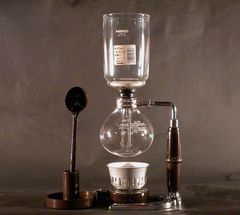
Using the principle of vapor pressure (a method invented by a marine engineer, probably inspired by a steam engine), the heated water flows upward from the lower beaker through a siphon and filter cloth, and then mixed with the coffee powder in the upper cup, the ingredients in the coffee powder are completely quenched out, and the quenched coffee liquid is removed from the fire and flowed back to the lower cup. After full of scientific process, you can enjoy the fruits of science.
Filter paper brewing method
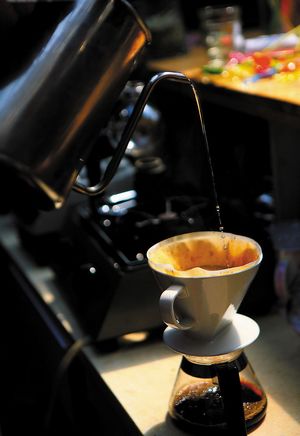
This is a method invented by housewives, a typical family method, very practical and simple! In brewing, filter paper is used to filter out all coffee grounds, and the filter paper is discarded every time it is used to get clear and mellow coffee. When using filter paper coffee pot, it is appropriate to choose finely ground coffee powder to get the best brewing effect.
Filter cloth brewing method
Using the principle of "old soup to boil new medicine", this is the method favored by experts, because after the filter flannelette has been used repeatedly, the grease of the coffee will be attached to the lines of the flannelette, making the coffee more mellow. If you want to fill everyone's coffee cups at once, try this old cloth-get twice the result with half the effort!
Water drop brewing method
Dripping coffee, also known as Dutch coffee, is a dripping pot invented by an archbishop in Paris. It uses cold or ice water to quench the coffee essence at a rate of 40 drops per minute. Of course, this method takes time and effort, and most people will not use this method to make coffee.
Modern methods
Coffee permeator
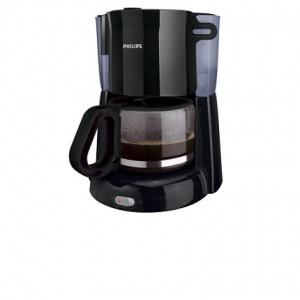
A household coffee pot can give you a wonderful smell of coffee and a beautiful sound, which is emitted as the water flows through the system. But the coffee brewed from the permeating pot has a bitter taste.
Connor vacuum device
You can sometimes see it in some old-fashioned stores (but mostly for decoration). This method is very interesting, much like alchemy. As long as you are careful not to let the coffee boil, it still tastes great, but it is not very convenient for daily use.
Trickling filter method
The drip filter is divided into two parts, the roasted coffee is placed on the upper filter paper, the hot water is poured on it, the liquid is dripped by gravity, and the whole process takes 6-8 minutes to enter the coffee pot below. in the end, all you get is pure coffee with a little foam. The correct manual dripping method is to use cold water and heat near boiling, heat the coffee pot, and then pour out the water. Add some water to the ground coffee to stimulate the coffee's activity. Then pour in the right amount of water.
French Piston Pot method
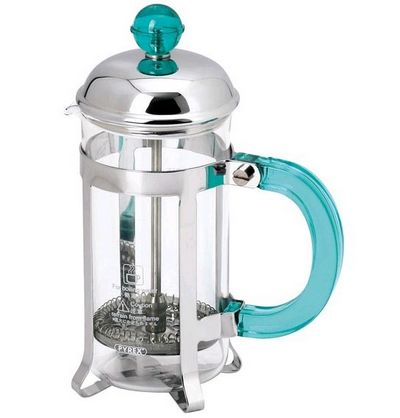
The method of using the piston pot is very simple. Now preheat the pot, put in the roasted coffee (about 5 grams per cup), add hot water and stir, soak for 4-5 minutes, then push down the stainless steel piston with mesh to separate the coffee foam from the liquid. Finally, pour the coffee liquid from the piston pot. One thing to pay attention to when buying piston pots is not to buy back the ones with nylon mesh pistons because stainless steel mesh is more effective and durable.
Espresso pot, mocha coffee maker
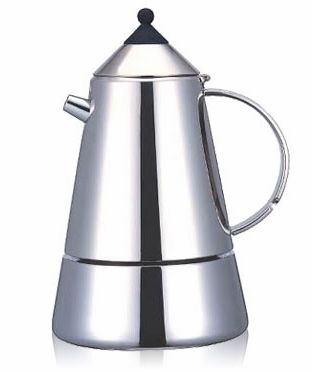
Their greatest feature is simple and dexterous, this coffee pot consists of two parts, water is placed in the lower container, pressure makes the water flow through the coffee into the upper container, and then everywhere from this container. Although it is clever and lovely, it has only a few advantages of piston pot and drip filter pot.
3. Italian coffee maker
Important Notice :
前街咖啡 FrontStreet Coffee has moved to new addredd:
FrontStreet Coffee Address: 315,Donghua East Road,GuangZhou
Tel:020 38364473
- Prev
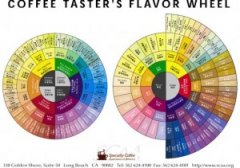
Coffee flavor wheel
Friends who love boutique coffee should be no stranger to this SCAA flavor wheel, but many say they don't understand it, so let's briefly talk about the structure and expression of flavor wheel today! The flavor wheel is divided into the negative flavor spectrum on the left and the normal flavor spectrum on the right. First, let's talk about the right half of the flavor spectrum. This part is mainly about the classification and formation of coffee flavor and aroma enzymatic.
- Next

"Coffee Beauty" Blue Mountain Coffee
About Blue Mountain Coffee the area of Jamaica is small. The Blue Mountains are located northeast of Kingston, the capital, because the mountain is surrounded by the Caribbean Sea. Whenever the weather is clear, the sun shines directly on the blue sea. The mountain peak reflects the bright blue light of the sea, hence the name. The highest peak of the Blue Mountains, which is 2256 meters above sea level, is the highest peak in the Caribbean and a famous tourist attraction. this
Related
- Beginners will see the "Coffee pull flower" guide!
- What is the difference between ice blog purified milk and ordinary milk coffee?
- Why is the Philippines the largest producer of crops in Liberia?
- For coffee extraction, should the fine powder be retained?
- How does extracted espresso fill pressed powder? How much strength does it take to press the powder?
- How to make jasmine cold extract coffee? Is the jasmine + latte good?
- Will this little toy really make the coffee taste better? How does Lily Drip affect coffee extraction?
- Will the action of slapping the filter cup also affect coffee extraction?
- What's the difference between powder-to-water ratio and powder-to-liquid ratio?
- What is the Ethiopian local species? What does it have to do with Heirloom native species?

